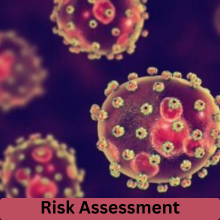
A tragic event in Iowa has drawn attention to the serious health risks associated with Lassa fever, a viral hemorrhagic illness endemic to West Africa. A middle-aged resident succumbed to this rare disease shortly after returning from West Africa, highlighting the need for public awareness and understanding of such infections. Let’s dive into what happened and why this incident is so significant.
What Happened?
The Iowa Department of Health and Human Services confirmed that a local resident died from Lassa fever after traveling to West Africa. This unfortunate event underscores the realities of a virus that, while less known in the U.S., poses serious risks to those who come into contact with it.
Understanding Lassa Fever
What is Lassa Fever?
Lassa fever is a viral hemorrhagic fever caused by the Lassa virus, first identified in Lassa, Nigeria, in 1969. It’s primarily spread by the multimammate rat, which is common in West Africa.
Symptoms and Transmission
The virus is transmitted through contact with infected rodents or their excretions. While mild cases can lead to symptoms like fever and fatigue, severe cases can escalate to bleeding, respiratory distress, and even shock. The challenge lies in diagnosing Lassa fever, as its symptoms often mimic those of other diseases.
The Patient’s Journey
Travel Details
The Iowa resident had recently returned from a trip to West Africa, where the virus is prevalent. The exact locations visited have not been disclosed, but they are crucial to understanding potential exposure.
Timeline of Events
After returning to the U.S., the patient did not exhibit symptoms while traveling. It was only later, after the onset of symptoms, that medical attention was sought, leading to hospitalization in isolation at the University of Iowa Health Care Medical Center.
Risk Assessment
Public Health Response
In light of this incident, health officials have reassured the public that the risk of transmission remains extremely low. This assessment comes from the CDC, which emphasizes that patients do not become infectious until they show symptoms.
Monitoring Close Contacts
Those who had close contact with the patient will be monitored for 21 days, the incubation period for Lassa fever. This proactive measure is vital to ensure that any potential spread is caught early.
The Role of Rodents
How Rodents Spread Lassa Fever
Rodents are the primary carriers of the Lassa virus. Transmission occurs when humans come into contact with the urine or feces of infected rats. This highlights the importance of maintaining clean environments, particularly in areas where these rodents are prevalent.
Geographic Regions at Risk
Lassa fever is most commonly found in countries such as Sierra Leone, Liberia, Guinea, and Nigeria. The risks extend beyond these borders, as the multimammate rat can inhabit various regions.
Hearing Loss and Other Complications
The Impact of Lassa Fever on Hearing
A concerning aspect of Lassa fever is its potential to cause permanent hearing loss. Studies indicate that about one in three infected individuals may experience varying degrees of hearing impairment.
Risks to Pregnant Women
Pregnant women face heightened risks when infected with Lassa fever, with nearly 95% of such cases leading to miscarriage. This alarming statistic underscores the need for awareness among travelers to endemic regions.
Also read: PayPal Plummets: Why Shares Dropped 6% Premarket
Diagnosis and Treatment
Challenges in Diagnosing Lassa Fever
Diagnosing Lassa fever can be difficult because its symptoms—fever, fatigue, and headaches—are common to many other illnesses. Early detection is crucial for effective treatment, making awareness of symptoms essential.
Treatment Options
While there is no licensed vaccine for Lassa fever, antiviral medications can help if administered promptly. Supportive care is also critical for managing severe symptoms.
Prevention Strategies
Promoting Hygiene
Preventing Lassa fever involves promoting good hygiene to minimize rodent exposure. Simple practices, like storing food securely and maintaining cleanliness, can significantly reduce risks.
Public Awareness Campaigns
Education plays a crucial role in prevention. Public health campaigns aimed at raising awareness about Lassa fever can help individuals understand the risks and recognize symptoms early.
Also read: Dwyane Wade’s Statue: A Tribute or a Missed Opportunity?
Conclusion
The recent death of an Iowa resident from Lassa fever serves as a poignant reminder of the dangers posed by viral hemorrhagic fevers. While the immediate risk to the public is low, it’s crucial to remain vigilant and informed. Awareness, education, and preventive measures are key to safeguarding against such rare but serious diseases.
FAQs
What is Lassa fever and how is it transmitted?
Lassa fever is a viral hemorrhagic fever spread primarily through contact with infected rodents or their bodily fluids.
What are the symptoms of Lassa fever?
Symptoms can range from mild (fever, fatigue) to severe (bleeding, respiratory distress).
How common is Lassa fever in the U.S.?
There have only been eight documented travel-associated cases of Lassa fever in the U.S. since 1969.
Is there a vaccine for Lassa fever?
Currently, there is no licensed vaccine available for Lassa fever.
How can I protect myself from Lassa fever?
Good hygiene practices, such as proper food storage and rodent control, are essential for prevention.

